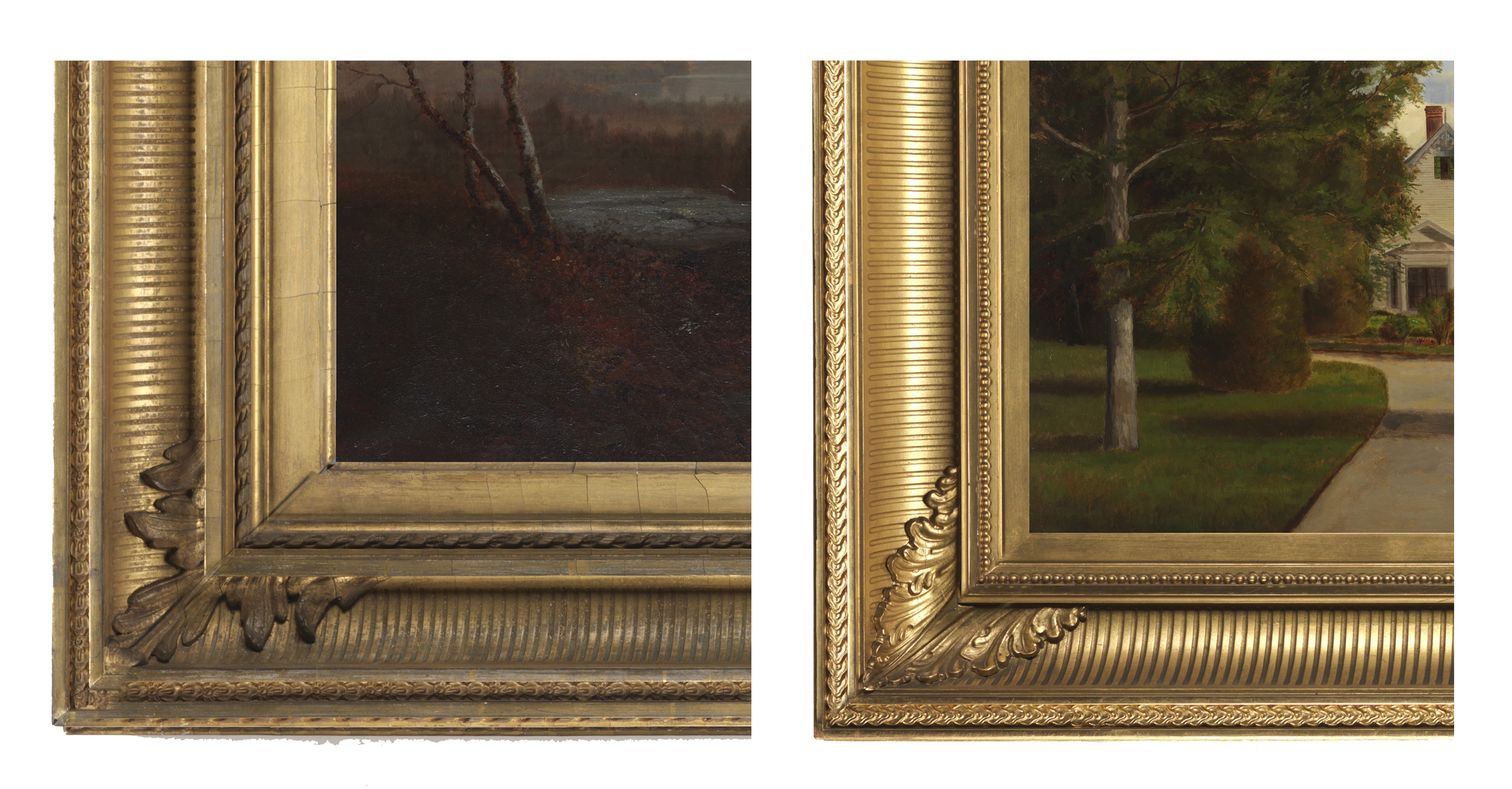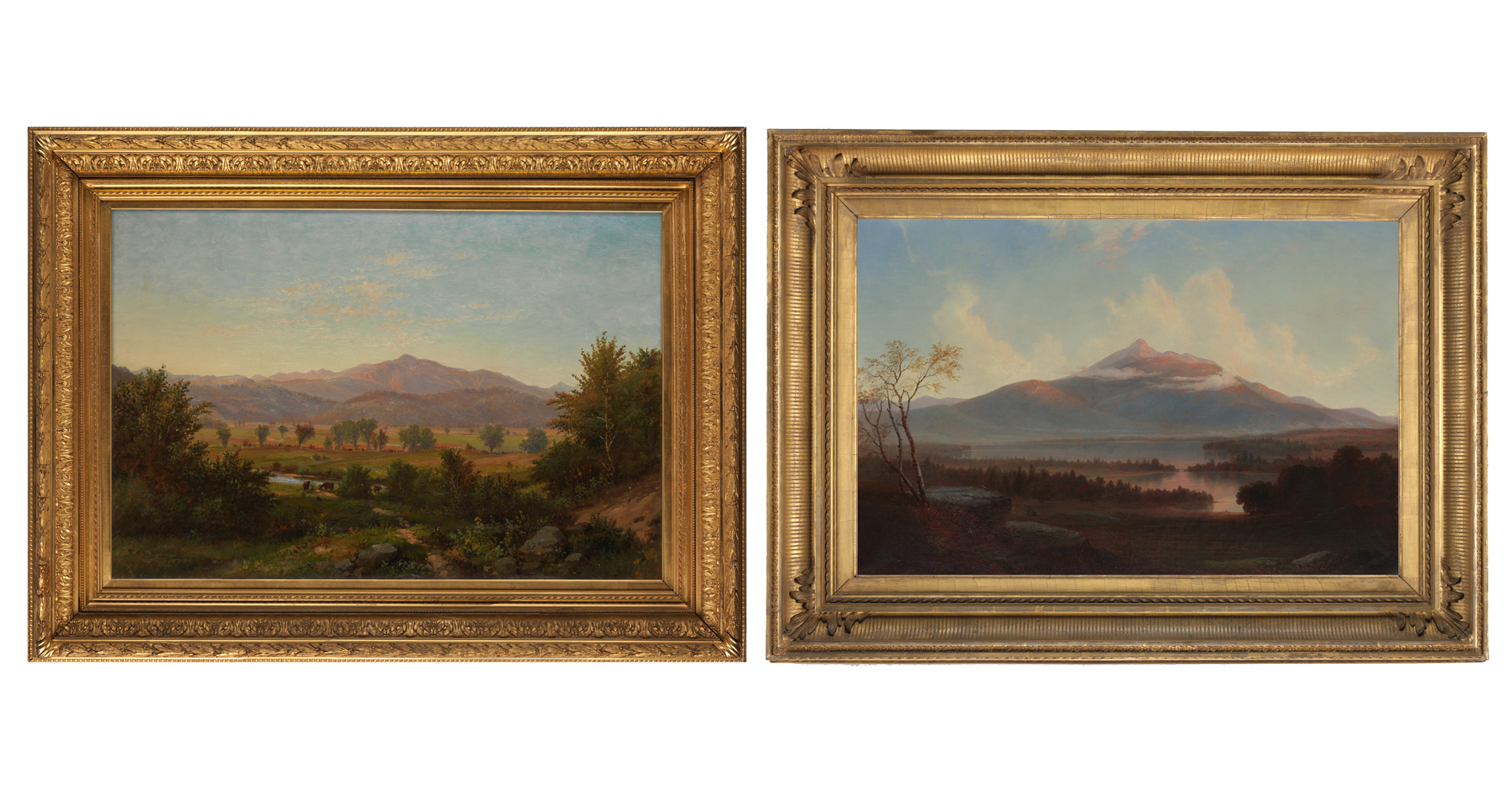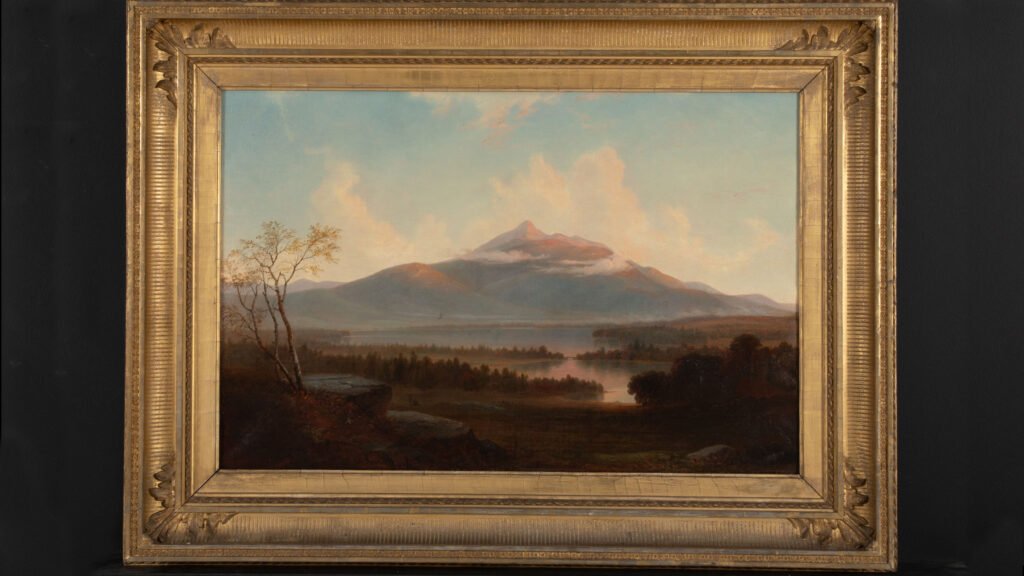 Eustis Estate
Eustis Estate
Mount Chocorua
Benjamin Champney
From the Conservator's Notebook
A Tale of Two FramesHistoric New England objects conservator Michaela Neiro supervised the conservation treatment and stabilization of this exhibition’s paintings and frames over a period of two years. The Conservator’s Notebook features explanations and insights that Michaela has drawn from her project notebook, including close-up photographs showing how the work was done.

Right: Frank Henry Shapleigh (1842–1906), A Country Home, 1866, oil on canvas, 27 9/16 x 39 ½ in., Bequest of Amelia Peabody, 1985.662. Located in Gallery Two.
Take a look at the two paintings above. Both were made and framed around 1860, when this style of frame was very typical. All the decorative molding elements—the outermost bead, the serpentine braid, the incised cove, and the corner ornament—were cast out of a putty-like material containing linseed oil and whiting called composition or “compo.” The ability to cast decorative elements instead of carving them allowed for much more elaborate moldings, and several at a time, to be used on frames and thus keep costs down. Because the compo was smooth coming out of the mold, gesso and bole were unnecessary. A thin coat of oil size was brushed on and the compo could be gilded very quickly. The oil gilded areas could not be burnished, however, and therefore they appear matte. The thin strips between the different compo decorations, called flats, were made of wood coated with gesso and bole. These flats were burnished to produce a shiny contrast to the oil gilding and make for a more interesting frame.

Benjamin Champney’s Mount Chocorua has hung at Barrett House (see Forest Hall in Gallery Two) for years and now shows its age. The compo on its frame has shrunk and cracked, and the gold has worn through from years of dusting. The oil size has dried and shrunk, causing faults in the thin gold layer and exposing the tan-colored compo below. Along the bottom edge and the high spots of detail, the exposed compo has darkened with dirt. This aged surface is very typical, natural, and acceptable considering its age.
The frame for A Country Home by Shapleigh looks remarkably good for its age – and so does the painting. Over 150 years old and no wrinkles! How can this be? The framed painting came to Historic New England in 1985. Sometime before then both painting and frame were given a facelift. The painted canvas was removed from its original stretcher and adhered to a Masonite board. This is a somewhat heavy-handed treatment, but the conservator likely had few other options to preserve what must have been a very delicate painting. The frame was likely in equally rough condition. Conserving a badly damaged frame so that it maintains its appearance of age is a very time-consuming, and thus expensive, process. It’s far easier to restore the frame to its original appearance by putting new gilding over old and that’s what happened when this was restored before it came to Historic New England. It looks fresh and new and much more “golden” than the frame on the Champney. This aesthetic was likely quite appropriate for the modern home it came from, but at Historic New England, we prefer items to have age-appropriate patina.
In the video below, Michaela Neiro describes the issues on the Champney frame that the conservation team worked to address.
Different Artists, Similar Subjects

Right: Benjamin Champney (1817–1907), Mount Chocorua, 1860, oil on canvas, 30 x 38 ¼ in., Gift of the estate of Jane N. Grew, 1920.461.
Little is known about George Frank Higgins. The painting is part of the exhibition so we can explore different artists’ approaches to similar subjects. Above you can see the two paintings side-by-side. Do you notice, for instance, that Champney’s is more atmospheric? Now look at the handling of the depth of field. Champney’s painting moves seamlessly from foreground, to middle ground, to distance, to sky, whereas here each reads like a separate band. The differences might be explained by Champney’s greater skill, but they’re also the result of choices each artist made.
